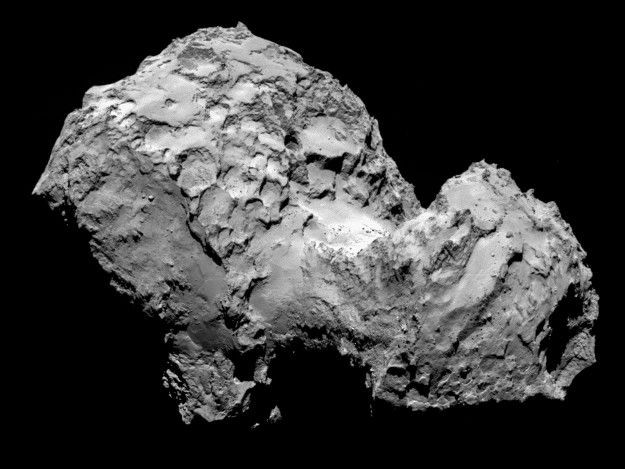Rosetta Mission Glitch Threatens Historic Comet Landing

A “hiccup” in the decade-long historic mission of the Rosetta spacecraft has scientists crossing their fingers that all goes well for Wednesday’s scheduled landing on a comet. Rosetta’s landing module, named Philae, reportedly did not power up properly when its controllers at the European Space Agency switched it on for the first time on Tuesday.
“We had a hiccup when we first powered it up. There was a little delay with it coming online. We don’t know what caused it and we are seeking to find out the cause,” Matt Taylor, a Rosetta project scientist, told the Telegraph of London. “Obviously it’s a concern for the next step. But everything appears to be working OK now, so we’re keeping our fingers crossed.”
If all goes well on Wednesday, it will be the first soft landing on a comet ever.
The Rosetta mission has already completed several milestones, including a rendezvous with Comet 67P/Churyumov-Gerasimenko over the summer. Wednesday is the second phase of this historic mission, in which Philae is expected to touch down on Churyumov-Gerasimenko at 10:35 a.m. EST, said NASA.
This is no easy task, of course. Landing anything on a comet requires massive amounts of calculating, and recalculating. The process has been more than a decade in the making, and before Philae could land on Churyumov-Gerasimenko, the ESA had to get its Rosetta spacecraft into position around the comet. Rosetta was launched March 4, 2004, and after four gravitational maneuvers, the spacecraft was in position to wait for the comet.
The ESA put Rosetta into a virtual hibernation in June 2011 and had to wait for nearly three years with no communication from the spacecraft. It was possible that Rosetta would not wake up from its three-year space nap, but in January 2014 Rosetta was back and operational.
All the careful planning just to get to this point was simply the beginning of the mission. Even more challenging was the next step, coordinating a rendezvous with the comet, which was successfully achieved in August. Now Rosetta is trailing the comet as it circles the sun and collecting data.
For the lander mission, ESA engineers had to select a landing site and once again plot the right trajectory that would safely land Philae on Site J, now named Agilkia, a relatively flat piece of real estate located on the "head" of the peanut-shaped comet.
ESA performed a final orbit determination on Tuesday that will be used to plan the spacecraft's thruster burn to position Rosetta so that Philae can land on Agilkia. Ahead of that landing, the Flight Dynamics Team at the ESA operations center will upload commands to Rosetta and Philae for the final maneuvers. A series of health checks on the spacecraft and the lander will take place before the final thruster burn.
On Wednesday, the Philae Control Team will have to wait for confirmation of two critical parts of the mission. The team will have to wait 28 minutes until it can determine if Philae separated from Rosetta and another 37 minutes to find out if Philae successfully landed on the comet. Once on the comet, Philae will drill into Churyumov-Gerasimenko and record the first images from a comet's surface.
ESA has been updating its progress and the important moments leading up to Wednesday as part of its Philae comet landing live stream, which began at 2 p.m. EST Tuesday. The broadcast includes a look at the scientific instruments aboard Philae and how the team will track the lander once it's deployed.
© Copyright IBTimes 2024. All rights reserved.





















